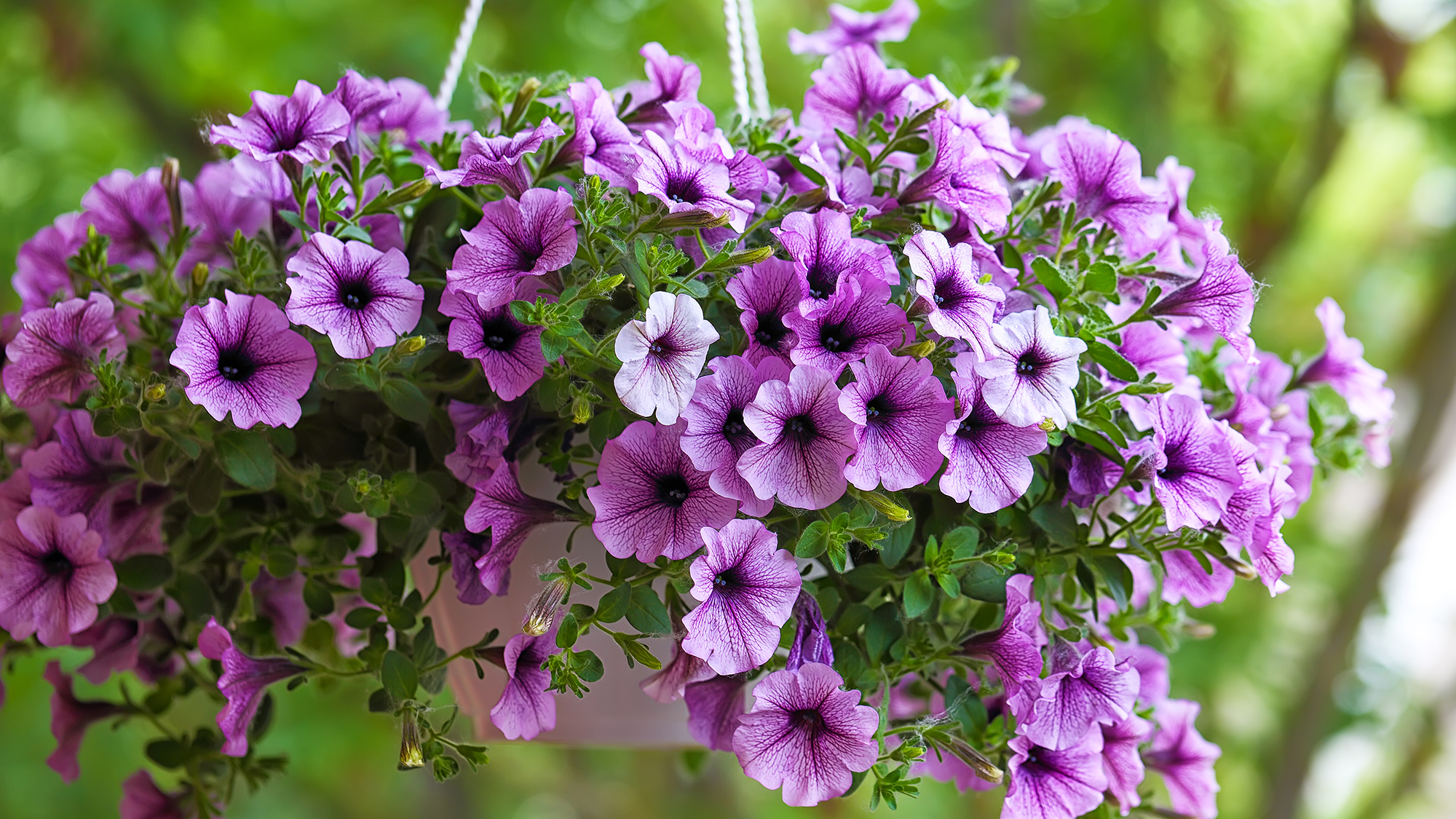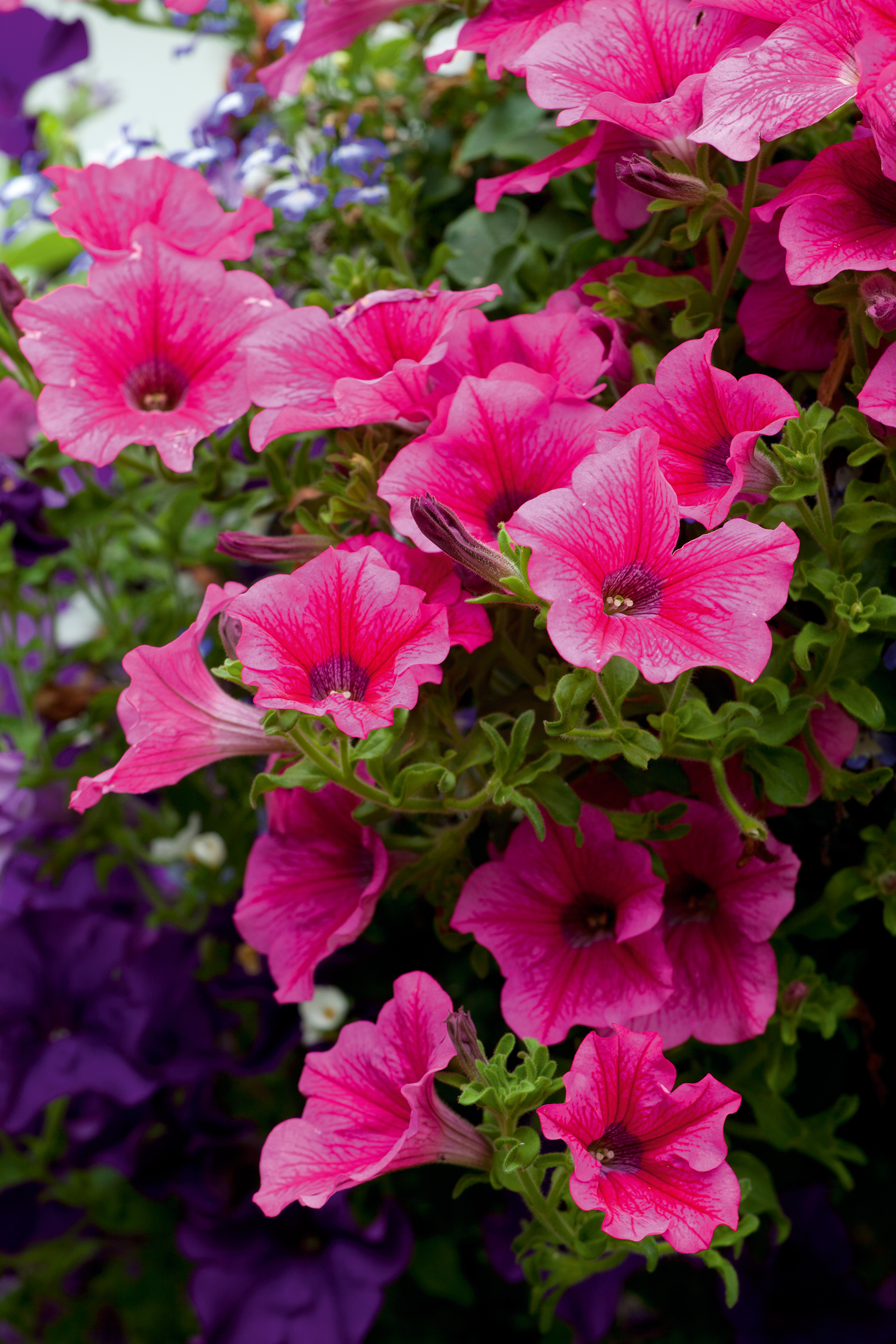How to keep petunias blooming – expert advice for fabulous flowers
Maximize the flowering time of petunias with these simple strategies from gardening professionals


Petunias create a beautiful display. Know how to keep petunias blooming and you can enjoy these colorful flowers for a long period from early summer to the first frost.
They’re versatile garden ideas and can be staples of your flower bed ideas or borders, as well as making a splash in containers, or hanging baskets. They’ll bring brilliant color to front yard flower bed ideas as well to boost your home’s curb appeal.
While they aren’t hard to grow, to keep petunias blooming beautifully for the longest time wherever you choose to plant them, there are some tasks you need to carry out and we’ve asked gardening experts to share the secrets of making them last.
How to keep petunias blooming: 5 top tips from experts
Petunias are ideal as front door plants to brighten your home’s entrance, are known as fly-repellent plants that make the yard a more pleasant place to spend time, and they’ll add a rainbow of color as patio plants, so you’ll want to keep them flowering as long as possible. These are the techniques gardeners use to keep them blooming.

1. Keep up with deadheading
Know how to deadhead petunias and you can keep them blooming. ‘Although we grow most plants for their decorative flowers, they actually flower to produce seed,’ explains gardening expert Steve Bradley.
‘Once the flower has been pollinated and the seed embryo fertilized, the plant feels it has done its job and flower production gradually stops. All the plant’s energy then goes into the developing seeds.
‘With petunias, deadheading can be carried out as soon as the tubular flowers start to collapse, but it is better to wait until the flowers start to shrivel and die. At this stage, the whole flower will break away from the plant, rather than tearing, and the easiest way to remove them is to pluck them off using finger and thumb.’
Design expertise in your inbox – from inspiring decorating ideas and beautiful celebrity homes to practical gardening advice and shopping round-ups.

Steve has written (or co-written) over 40 practical gardening books. He has been Gardening Correspondent for The Sun newspaper since 2002, answering hundreds of readers’ letters every year. He also has a weekly column in Amateur Gardening magazine.
2. Consider pruning
As well as deadheading, pruning might be necessary to prolong flowering. ‘Most types of petunia – especially the trailing ones – produce most of their leaves and flowers at the shoot tips, which means the bases of the stems can become bare and woody,’ says Steve Bradley.
‘Cutting back older stems by at least one-third can encourage new shoots to form closer to the base of the plant.’
3. Position them in the sun
Petunias bloom best in direct sun. ‘Petunias need at least five or six hours of good sunlight; they’ll perform even better when located in full sun all day,’ say the experts at the University of Minnesota Extension.
OK, this tip isn’t going to help you now if you’ve already planted petunias in a shady bed or border (although it will prove useful for the future). But if you’ve put these colorful flowers in shade when they’re in containers or hanging baskets then you can move them to boost flower production.
4. Water according to where they’re planted
For thriving petunias and a great display of blooms, keep up with the watering. If they’re in a bed or a border, then thorough watering once a week should be sufficient. Soak the soil to a good depth (we’re talking 6 inches); this helps them produce deep healthy roots.
Bear in mind that petunias in containers need to be watered more frequently and watering hanging baskets sufficiently is equally important – even as much as daily care can be required since they dry out more quickly. Water a container until you see it flowing out of the base.
5. Feed petunias
Petunias need fertilizer to put on their best show of flowers. ‘Petunias are hungry plants and need regular feeding with a high potash feed as soon as the first flowers open to help increase and prolong flowering,’ advises Steve Bradley. ‘Regular liquid feeds tend to have a more instant effect on the plants’ flowering performance.’
FAQs
What happens if you don’t deadhead petunias?
If you don’t deadhead petunias, you won’t encourage your plants to produce new flowers. Result? Your wonderful display of blooms will likely soon be at an end. There are exceptions, however. Supertunia and spreading Wave petunias don’t require deadheading and carry on blooming vigorously. As for the spent blooms, these fall away, so they won’t get in the way of the new flowers.
Petunias will reward the right care with a riot of blooms that keeps on going. They’re a favorite on our list of flowers for pots in full sun, and one of our top choices of trailing plants for hanging baskets. The latter will also make a great show as the middle element of the thriller, spiller, filler recipe for show-stopping containers or tumbling from window boxes.

Sarah is a freelance journalist and editor. Previously executive editor of Ideal Home, she’s specialized in interiors, property and gardens for over 20 years, and covers interior design, house design, gardens, and cleaning and organizing a home for Homes & Gardens. She’s written for websites, including Houzz, Channel 4’s flagship website, 4Homes, and Future’s T3; national newspapers, including The Guardian; and magazines including Future’s Country Homes & Interiors, Homebuilding & Renovating, Period Living, and Style at Home, as well as House Beautiful, Good Homes, Grand Designs, Homes & Antiques, LandLove and The English Home among others. It’s no big surprise that she likes to put what she writes about into practice, and is a serial house renovator.